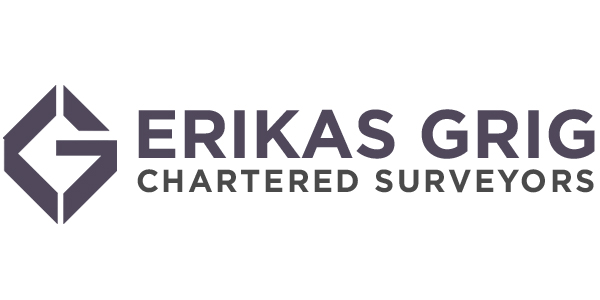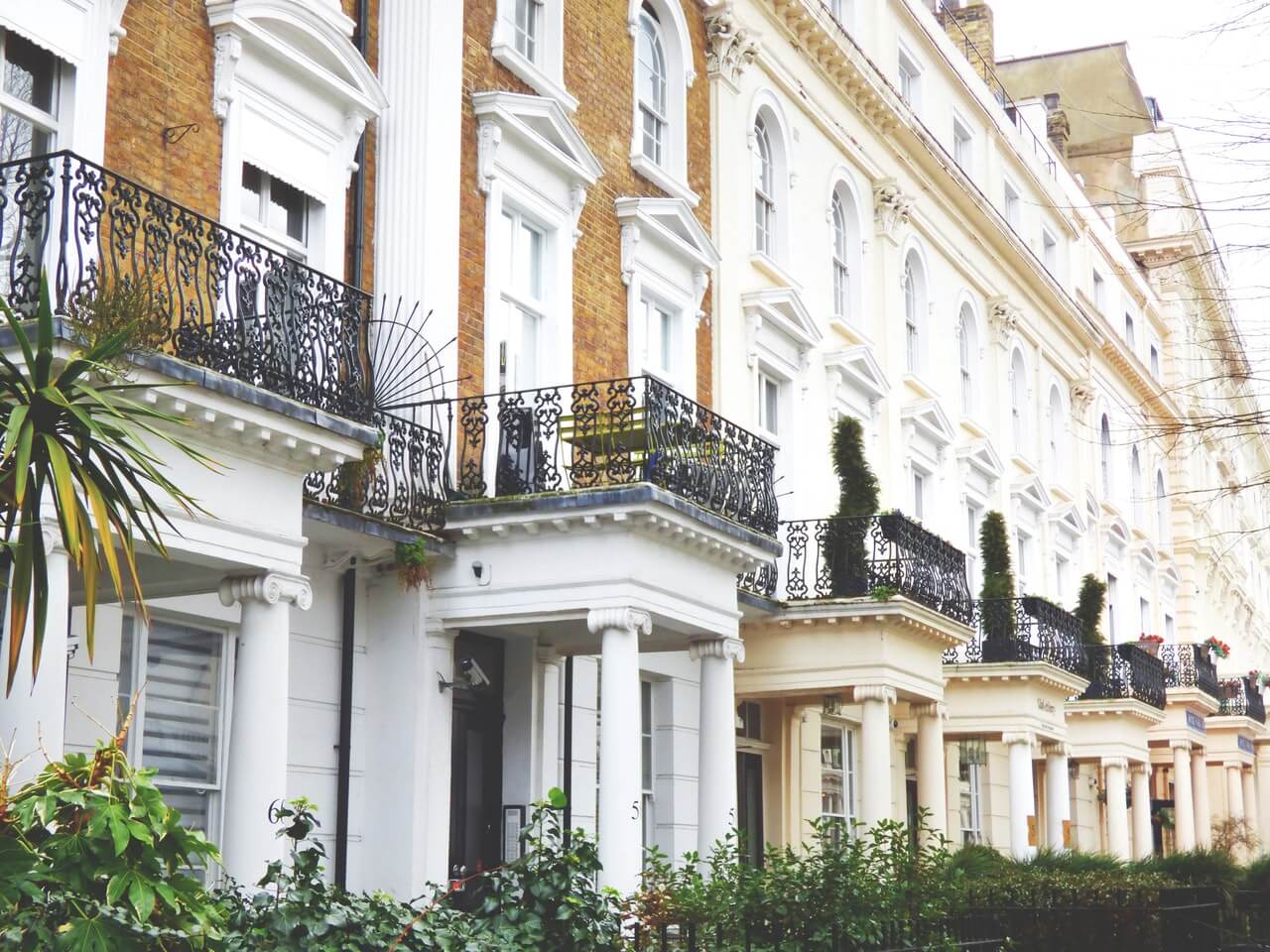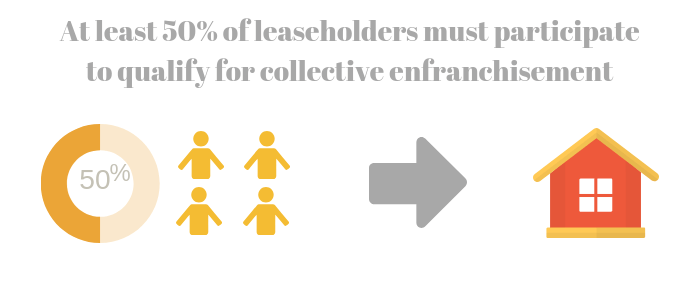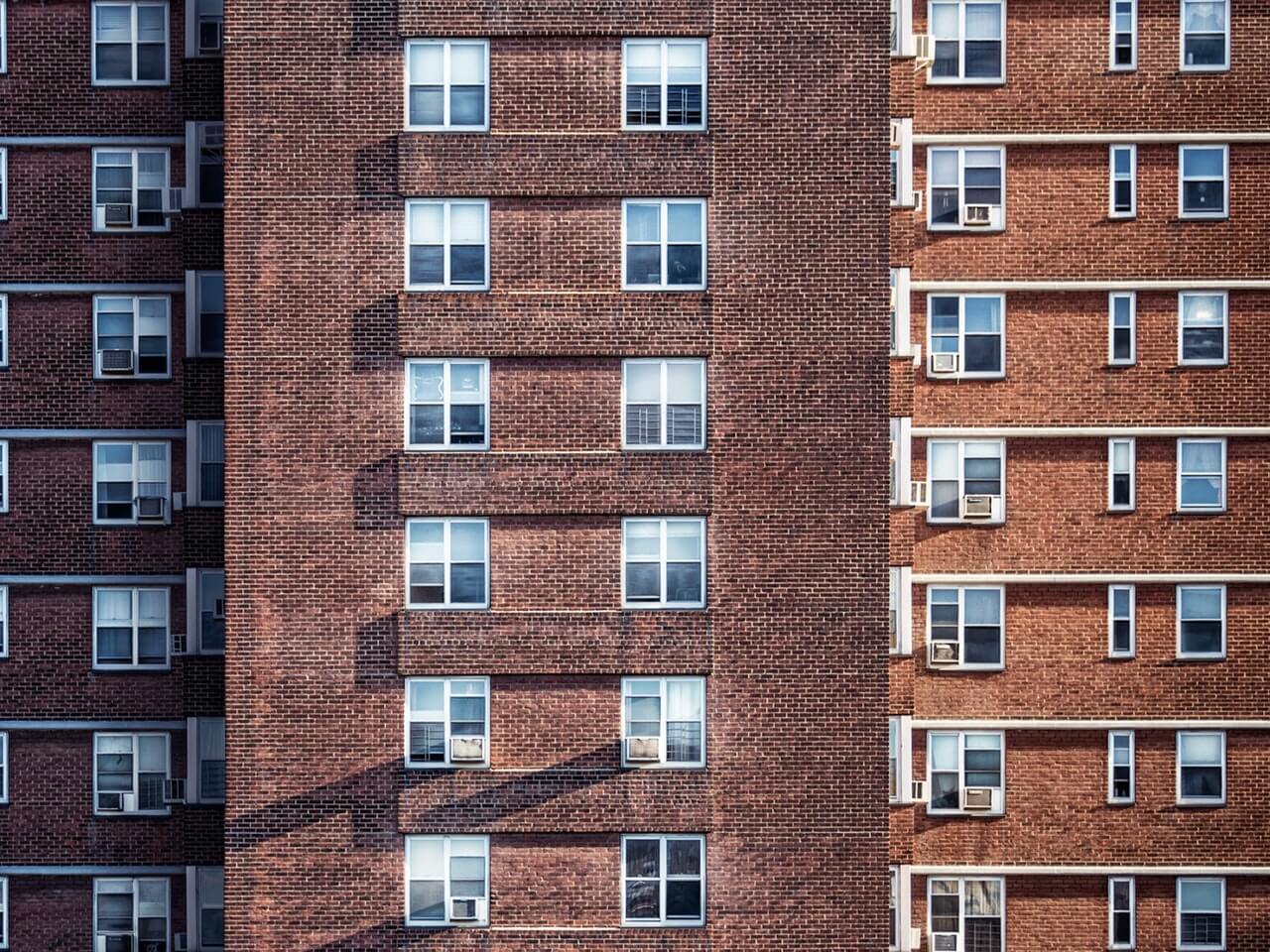Collective Enfranchisement – What is it?
Collective freehold enfranchisement is a right upon qualification to collectively acquire the freehold of the building from the existing landlord. This involves owners of the flats referred as ‘qualifying tenants’ joining together in the legal action which is prescribed in the Leasehold Reform Housing & Urban Development Act 1993 (as amended).
There are set rules prescribed in the 1993 Act that flat owners must meet before being able to exercise the right to enfranchise. The initial rule demands that at least 50% of the qualifying tenants must participate in the claim and the building itself must meet the required criteria which are outlined below.
The right to enfranchise involves paying reasonable compensation to the landlord for the loss of the freehold interest. This includes – the loss of ground rents, reversionary flat values, development value commonly referred to as hope value and marriage value if applicable.
Collective freehold enfranchisement process outline
The basic enfranchisement process as follows:
- Seeking professional advice to confirm whether a building qualifies for collective freehold enfranchisement.
- Getting other qualifying tenants on board to meet the required participation threshold.
- Instructing a valuer to prepare freehold enfranchisement valuation so that you could decide whether it is worthwhile to pursue financially.
- Instructing solicitor experienced in freehold enfranchisement claims to act for you.
- Deciding on nominee purchaser who will hold a freehold interest upon collective enfranchisement.
- Serving a correct notice as prescribed in the 1993 Act to the freeholder and other parties if present.
- Preparing for subsequent procedures involving the receipt of counter-notice and negotiation procedures; or application to county court for vesting order if counter-notice is not received.
Who is eligible for an enfrachisement?
The main criteria are as follows:
- Two-thirds of the flats in the building must be held by qualifying tenants. (It does not matter whether the flat is held in private name or in the company structure). The definition of the ‘qualifying tenant’ means a person holding a flat sold on a lease for the original term of more than 21 years’; and
- At least 50% of qualifying tenants must participate in collective enfranchisement. (For instance, if there are 10 flats in the block at least five must participate. Please note that where the building only contains two flats, both flats must participate.); and
- The building must contain at least two flats.
What are some of the exemptions preventing collective enfranchisement?
- If the tenant has an interest in more than two flats in the building. When this applies such flats are discounted from the two-thirds threshold.
- The tenant has a business in-situ or commercial lease.
- The flat is held by a Charity Trust and used as part of the charity functions.
- Buildings with cathedral precinct.
- Buildings that have an element of operational railway, bridges or tunnels.
- National Trust properties.
- Properties held by Crown.
Resident landlord exemption
There is no right of collective enfranchisement where all four criterions are met below in accordance with section 118 of Commonhold and Leasehold Reform Act 2002:
- The building does not form a part and is not a purpose-built block; and
- The same person has owned the freehold of the premises since before conversion into two or more flats; and
- The same person or his family member, has occupied a flat in the building as his only principal residence for the past 12 months.
Organising a required participation
Once you determined whether the building qualifies for collective enfranchisement, the hardest part follows and that is – getting a required number of leaseholders to join the action. This usually takes a good level of organisation and persuasion and you should be prepared for the scenario where certain leaseholders will drop out in the process.
Please note, as previously mentioned at least 50% of leaseholders must participate in the claim to qualify for serving the initial notice called section 13.
Choosing professionals
It is crucial that you only instruct surveyors and solicitors with sufficient experience to represent you in the freehold enfranchisement claim.
When choosing a solicitor, research whether they are part of accreditation schemes such as The Law Society or belong to associations such as Association of Leasehold Enfranchisement Practitioners.
Before appointing surveyor make sure that they are RICS regulated and have demonstrable experience in freehold valuation for collective enfranchisement and successful negotiation; good and experienced surveyor can save you thousands of pounds when it comes to negotiating collective freehold enfranchisement claims.
Also, it never hurts to confirm that both surveyor and solicitor have a professional liability insurance policy that covers freehold enfranchisement valuation. You will be expected to sign terms of engagement with both professionals at this stage outlining the scope of work and what is covered and what is not.
Collective enfranchisement valuation
The valuation of the collective enfranchisement premium is the most important part of the whole process. The surveyor upon receipt of your instructions will arrange an inspection of the building and each of the flat demises.
Both communal and flat demises are inspected and measured in accordance with industry standards. It is important that measurements of both internal and external areas are completed with precision as it is one of the determinant factors in arriving at the market value of flats and any additional areas such as roof space, shared internal parts or external grounds.
The freeholder will be entitled to compensation for any internal and external areas that are not demised to the leases of the flats.
Your surveyor will provide a detailed valuation of likely premium for collective enfranchisement and this will include:
- Highest expected premium.
- Lowest expected premium.
This will allow you to budget for establishing the total cost fund of the claim. With freehold enfranchisement claims, there is always a negotiation element involved and your surveyor will negotiate on your behalf to get you the most cost-effective premium as possible. However, it is not always possible to achieve the lowest quoted premium as outlined in the surveyor’s report. This will depend on the number of factors, such as comparable evidence, lease terms, hope values and court decisions that set precedents for variables adopted in the statutory valuation formula.
Establishing a cost fund
You can decide whether you wish to proceed with collective enfranchisement upon receiving valuer’s premium calculations. Your solicitor will serve the initial notice as soon as you instruct them and after correct search procedures are completed.
There are no prescribed obligations in the 1993 Act where you would need to contribute the percentage of enfranchisement premium to the landlord before the claim as required in the lease extension section 42 notice.
The collective enfranchisement premium is only paid when the actual settlement is agreed between both parties.
In case, of an absentee landlord, the full premium becomes payable when vesting order is granted by the county court and also when tribunal determines the final premium payable.
Working out a participation agreement
When acquiring a freehold collectively it is unlikely that every leaseholder will be participating in the claim. Therefore, a shortfall for those that are not participating must be covered by those that are participating. This leads to the questions – who is responsible for what? How costs are going to be apportioned?
It is crucial that participation agreement is drafted and agreed between leaseholders and representing solicitor. The participation agreement is a legal binding contract between the leaseholders acting on the purchase of the freehold and management thereafter.
It is advisable that participation agreement is worked out at the very beginning of the collective enfranchisement process. However, that is not always possible especially if there are a lot of leaseholders involved.
It is possible to start the process without having everyone on board if the initial participating leaseholders meet a minimum of 50% threshold requirement. It is advisable for early participating leaseholders to instruct a valuer to prepare a premium estimate and then allocate these early incurred fees in the participation agreement.
When other leaseholders join the claim, they will have to contribute their share of costs plus the early costs incurred by initial participating leaseholders.
There are other most common provisions that should be considered in the participation agreement:
- Outline who is authorised for giving instructions to valuer and solicitor to avoid where everyone is giving instructions and creating confusion between professionals;
- The professional costs and premium apportionments should be agreed and prescribed in the contract; and
- When the leases repairing covenants are not clear, the participation agreement should aim to rectify such shortcomings and insert covenants addressing these issues.
Choosing a nominee purchaser
The nominee purchaser is required to act as the main purchasing person or entity when acquiring the freehold. The section 13 notice of Leasehold Reform Act 1993 requires the nominee purchaser to be named in the initial notice. Therefore, it is paramount between leaseholders beforehand to agree on the entity type that will act as nominee purchaser to avoid initial notice being invalidated.
On completion of freehold purchase, the nominee purchaser will be responsible for the management of the whole block or just specific areas within the grounds; it will depend on individual lease provisions prescribing individual service charge percentage apportionments.
The Leasehold Reform Act 1993 does not specifically prescribe what entity nominee purchaser should be; however, most common entities for nominee purchaser are as follows:
- A limited company structure formed by leaseholders;
- A trust;
- A single person;
- Or a number of individual persons (with a maximum of 4).
It is best to seek an expert opinion when setting up an entity for nominee purchaser, as each has certain drawbacks that must be considered based on the individual circumstances.
Serving initial section 13 notice
Your solicitor will prepare a statutory section 13 notice and will serve it to the immediate freeholder / landlord. It is crucial that you choose a solicitor experienced in collective enfranchisement area. If your freeholder or their solicitors will spot any inaccuracies and find any faults within section 13 notice, they most likely will apply to the court to have a notice dismissed.
If this happens then you cannot make a further application for the period of 12 months. The freeholder benefits from this because it prolongs the process and increases the freehold value as leasehold interests diminish.
Receiving freeholder’s counter-notice
The freeholder is responsible for serving a section 21 notice within the prescribed time limit in initial section 13 notice. The counter-notice must state the following:
- Freeholder admits that participating tenants are entitled to exercise the right to collective freehold enfranchisement and provide a counter premium; or
- Not to admit participating tenants right to collective enfranchisement entitlement and provide such reasons. (This is then to be determined by a county court);
- Neither admit or deny the right to collective enfranchisement by making the application to the court for an order that excludes such right under grounds of freeholder’s intention to redevelop the whole or substantial part of the building;
- Any leaseback proposals by the freeholder. This means where the freeholder owns a flat, or flats, he gains an option of taking a leaseback on such properties on a 999-year lease.
If the freeholder fails to respond within section 13 prescribed time limits, the nominee purchaser can apply within 6 months to county court for a vesting order, otherwise, the initial notice is deemed invalid.
Post section 21 counter-notice negotiations
It is very likely that your instructed valuer will need to negotiate on your behalf with the freeholder’s valuer as premiums between notices will differ and sometimes significantly. In principle negotiations between valuers involves a lot of back and forth verbal and written communication during which valuers try to settle the differences on their variables used in the collective enfranchisement valuation. It is crucial for the valuer to understand the negotiation process and be knowledgeable about case law that determines the variables used in the premium valuation.
If parties cannot agree on the collective enfranchisement valuation, then either party can apply to the First-Tier Tribunal which will then hear the case and determine the premium of the claim. The application must be made at least 2 months from, but no later than six months from the receipt of the counter-notice date.






